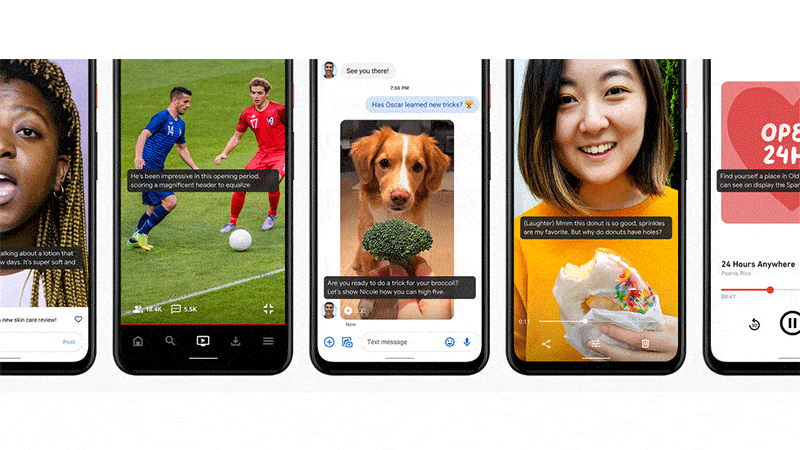
Almost a decade ago, Google added automatic captions to videos on YouTube to make online videos more accessible. However, these captions did not really help deaf or hard of hearing people, thus Google created Live Caption, which is an automatic captioning system – fast and small enough to fit on a smartphone. Live Caption is especially helpful in situations where you’re on a train or want to follow along with the conversation more closely.
But with the launch of Pixel 4, Google is making Live Caption now officially available to more digital media assets. Now with a single tap, Live Caption automatically captions videos and spoken audio on your device, however, it doesn’t work with phone and video calls. Everything happens in real-time and on the device and it works even if you don’t have cell data or Wi-Fi. What’s more interesting is that these captions stay private and never leave your phone. And, if you want to see more text, simply double-tap to expand the caption box.
Google has developed Live Caption in collaboration with individuals from the community and partners like Gallaudet University, which one of the world’s premier universities for Deaf and hard of hearing people. According to an early Deaf tester, Naiajah Wilson, Live Caption greatly impacted her daily life and now Wilson doesn't have to wake up mom or dad and ask what's being said.
Currently, Live Caption supports English and Google plans to support more languages soon. In addition to Pixel 4, Live Caption will also be rolled out to Pixel 3, Pixel 3 XL, Pixel 3a and Pixel 3a XL later this year.
‘We’re working closely with other Android phone manufacturers to make it more widely available in the coming year,’ said Google.
/pcq/media/agency_attachments/L8pkS8gpnodJThOdAfv1.jpg)
 Follow Us
Follow Us